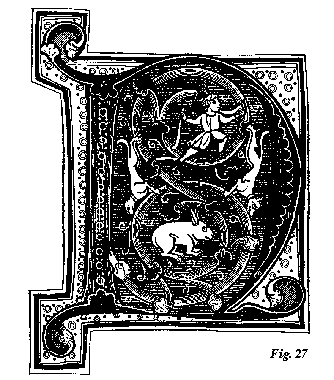ADDRESSES ON DECORATIVE COLOUR 481
one belonging to the sixteenth century, exhibited that carelessness and degradation in a marked degree. The art having reached its culminating point about the middle or towards the close of the thirteenth century, from that period began to decay, the principles of it having been lost sight of in the attempt to attain greater luxuriousness of drawing and effect, those principles which he 
9. He had said that writers were not reverenced sufficiently in these days,-he said also that neither were painters reverenced as they ought to be. It was a very difficult thing to paint well-much more so than most people imagined; and to lay on light and shade properly, to realise and to convey upon canvas a thorough impression of the varying effects of sunshine and shadow, in the colour of the air, and in the tints given in every object in nature, was a far more difficult thing than most men were capable of accomplishing. This was the reason why we had so few really good painters, and so many bad paintings. There had been never than three or four really good painters in the world in any one age, and no wonder, for it required talent of a very rare order to be a painter in the higher sense of the term. The fault of the present age was that we never knew the difference between good and bad painting, and it was a miserable thing to see a
1 [In connection with this lecture, it may be noted that seven years later (June 1861) Ruskin addressed the Society of Antiquaries of London upon the subject of illuminated MSS. This address was in connexion with an Exhibition arranged by the Society. In the Proceedings of the Society of Antiquaries (1861, p. 408) it is recorded that-
“John Ruskin, Esq., made some observations on the gradual development, both in colour and form, of the art of illuminating till it reached its culminating point in the 13th century; and thence traced its gradual decay, from the introduction of principles at variance with what he considered the proper functions of this beautiful art.”
In “an interesting and characteristic address” (says the Times, June 10, 1861), “he proceeded to trace the gradual development of the art, both in colour and form, down to the period when, in his opinion, the art of illumination abandoned its proper function, and by the application of shading effected the final decay of what had constituted its essential principles and glory in the 13th century.”
“He showed” (says the Guardian of June 12, 1861) “how the art of illumination
XII. 2 H
[Version 0.04: March 2008]